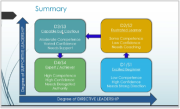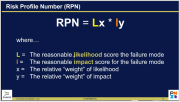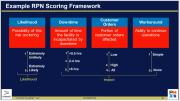Written by: Alex Leonard, PMP
Presentation Overview 
On February 21, 2023, the Agile Forum of the PMI Atlanta Chapter hosted the “Forecasting with Monte Carlo Simulation” Special Interest Forum Event as presented by Andrew Fuqua. With over 35 years of professional experience in product development, product management, and project/portfolio management, Andrew provided new levels of insight into project planning and forecasting. Triangulation is the practice of utilizing 3-4 forecasting methods, for example Points/Velocity, SWAG Approach, or the Monte Carlo Simulation, to make accurate forecasts and estimates.
The Monte Carlo Simulation is considered one of the most accurate ways to forecast project or sprint completion. This is because it simulates outcomes based on the analysis of a wide range of available historical data from similar projects previously performed, whether internal or external to an organization. Some of the data analyzed through the simulation includes previous project completion timelines, project complexity, and probability of stories splitting into multiple stories (e.g., one story becomes two or more).
Once the Monte Carlo Simulation has been completed, those responsible for forecasting project completion timelines are able to complete their projection through various levels of confidence. For example, a mid-July timeline projection may have an 80% confidence level, while an early-July projection may be acceptable at a 70% confidence level. Andrew does, however, suggest that a confidence level of 80% is the most common benchmark because it gives project planners the flexibility to adjust forecasting based on the risk appetite within their respective organizations.
Andrew also presented and demonstrated a useful spreadsheet tool that aids in performing Monte Carlo Simulations. See link to the free resource below for more information:
https://www.focusedobjective.com/pages/free-spreadsheets-and-tools
Takeaways
- To make effective estimates & forecasts, it is paramount to use multiple forecasting tools through the Triangulation method. This will include the use of 3-4 different forecasting tools.
- When making estimates, avoid giving a single date. Actual results tend to be on the pessimistic side.
- Utilizing Monte Carlo Simulation allows you to make estimates for project/sprint completion based on assumptions around complexity, historical data, and ranges of story splits.
Next Event
Join us at the next PMI Agile Forum on March 21, 2023
Keynote Presentation: TBA, Varun Anand
Register at www.pmiatlanta.org/events/event-calendar
Event Pictures
















